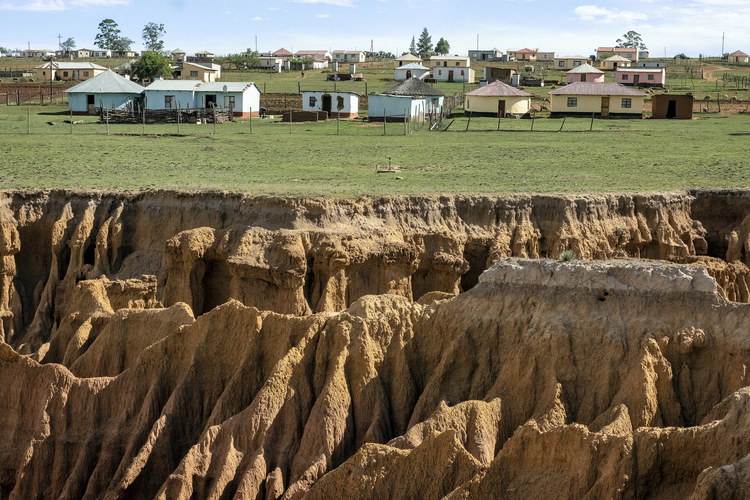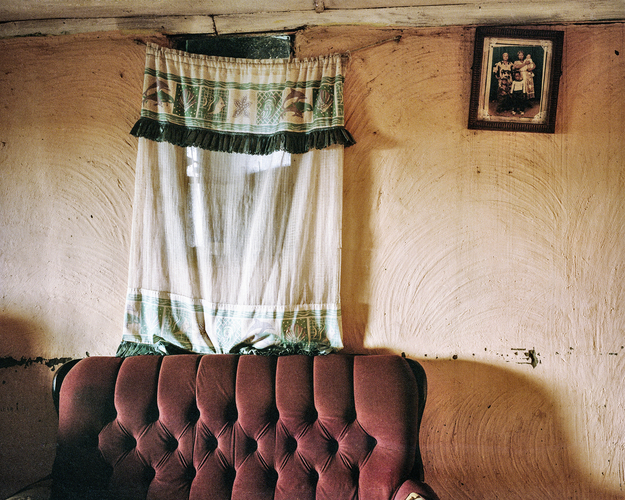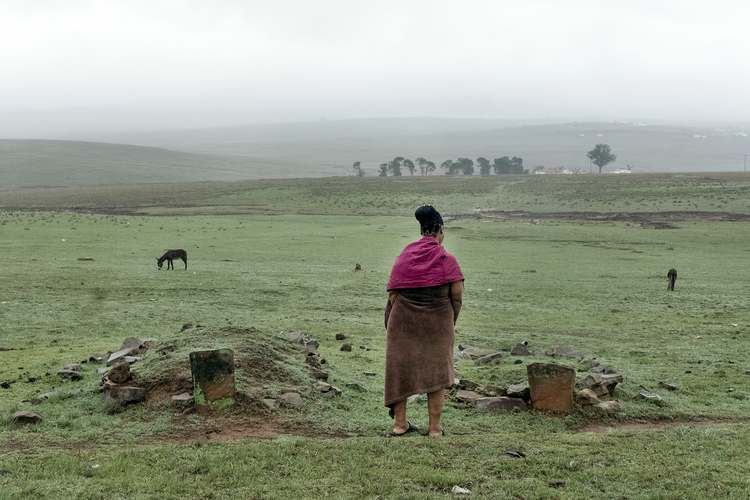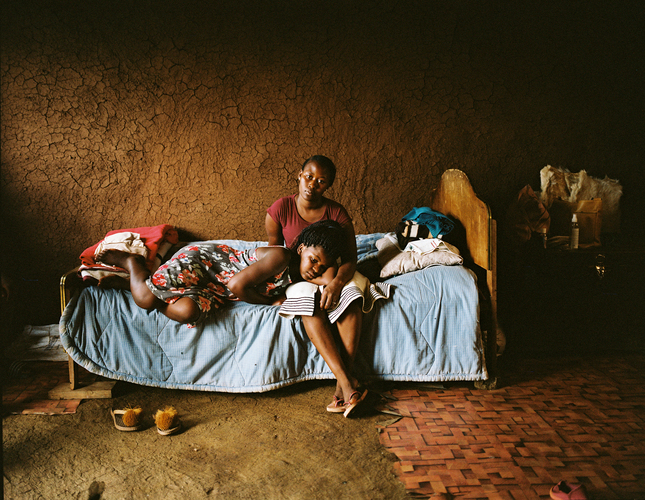South Africa has a very distinctive photographic flavour and its titans include Santu Mofokeng, Sabelo Mlangeni, and Ernest Cole to name a few. All of whom were either mentors or influences for Lindokuhle Sobekwa, a renowned photographer, whose work is a continuation of this long legacy. Today, I spoke with Sobekwa about winning the 2023 FNB Art Prize, the upcoming show at the Johannesburg Art Gallery (JAG) and how he manages to balance personal narratives with the larger social histories of South Africa.
While Sobekwa has just won the FNB Art Prize, his work has been widely recognized, with previous publications and exhibitions both locally and internationally. The FNB Art Prize jury praised his ability to present a distinctly South African narrative, capturing both the struggles and softer moments of life. As the first documentarian to win this award, he received a cash prize and this weekend, he opens his solo exhibition at JAG, the occasion for which I was allowed an audience.

Thembeka Heidi Sincuba: What does this moment of recognition mean to you?
Lindokuhle Sobekwa: Recognition has played a huge role for me. Being acknowledged at home, here in South Africa, is something special. It feels like if you’re recognized at home, it sets the stage for everything else. This is a highlight not just for me but for the greater photographic community in South Africa. It’s a moment we can all be proud of.
THS: You’ve mentioned that this moment is particularly special because you’re showing your work at the Johannesburg Art Gallery. What does it mean for you to exhibit in this space?
LS: Showing at the Johannesburg Art Gallery is very meaningful to me. Growing up, this was a place that offered me so much knowledge and inspiration. I remember school trips here, seeing amazing shows that sparked my imagination. So, to finally exhibit in this space feels like bringing my work home, which hasn’t been seen in South Africa, or in Johannesburg for that matter. So they’ll be seen for the first time, you know, so I’m excited but also a bit nervous, given that I haven’t exhibited in Johannesburg for a long time. Overall, I’m really looking forward to everything.

Digitized with Negative Lab Pro v2.1.0
THS: Let’s dive into your exhibition, Umkondo: Going Deeper. What does this project mean to you personally?
LS: Umkhondo has a double meaning that resonates deeply with me and my work. The word can mean “facing something” or “a symptom of something,” but it also suggests “finding something.” That’s an interesting metaphor for photography, which is essentially about discovering and revealing. In this project, I’m presenting two interlinked bodies of work, each informed by the other.
One part of the project began in 2017 when I found an old family photograph in my mother’s Bible. It was a picture of us as children, but my sister’s face was cut out. That photograph brought back a flood of unresolved memories. My sister Ziyanda disappeared for a decade, and the day she vanished, she was with me. We had just collected money from our father, and I was hit by a car on the way home. While I was hospitalized, Ziyanda disappeared, and it was the same cutout photograph that my mother used when searching for her. Sadly, Ziyanda was found ill in a nearby hostel, and she passed away soon after.
This photograph was the only one my family had of her, and it became the image used for her funeral. For me, it remained a faceless memory, and that unresolved feeling drove me to explore this story through photography. I naively thought that photography would give me answers and help me heal.

THS: Your work often intertwines personal and familial history with broader social narratives. How do you balance these two aspects, and do you see one influencing the other more?
LS: There’s definitely a balance, but for me, it’s more about how these aspects are interconnected. My family’s experiences are not isolated; they reflect the broader realities of South Africa. By turning the lens inward and focusing on personal stories, I’m also commenting on the larger social issues. This approach allows me to bring forward stories that might otherwise be seen as just “other people’s stories.” These histories have often been told by outsiders, not by us. As someone who was once the subject of these narratives, telling these stories myself creates a common ground with the audience. It makes the connection and the emotions more relatable and real.
THS: Our families often rely on oral history to keep these stories alive, but that’s such an ephemeral thing. Photography, on the other hand, provides static evidence—a tangible piece of history. How do you navigate these almost opposite worlds?
LS: It’s definitely a challenge, but I’m still figuring out the best way to capture both the ephemeral nature of oral history and the solidity of photography. For me, it’s not just about the photograph; it’s about integrating other elements like writing, captions, and even incorporating oral history into the work. Oral history, along with written histories like those of Credo Mutwa, informs the stories we share today. I’m using photography in a way that hasn’t been done before—not that I’ve invented anything new, but it’s different from how many people use it. I want to use it as a marker of oral history and time. Photography helps preserve stories that I might not have heard from my family if I hadn’t asked. I’m trying to contribute to making oral history more visible and part of the archive.

Sobekwa’s solo exhibition, Umkhondo: Going Deeper, opens to the public this Saturday, the 24th of August at 13:00 at the Johannesburg Art Gallery and is on until 23 March 2025. Presented in collaboration with Goodman Gallery, this exhibition marks Sobekwa’s first solo show at JAG following his 2023 FNB Art Prize Award. It’s a great opportunity to witness a significant moment in the local art scene and experience Lindokuhle Sobekwa’s world-renowned work firsthand.




















































